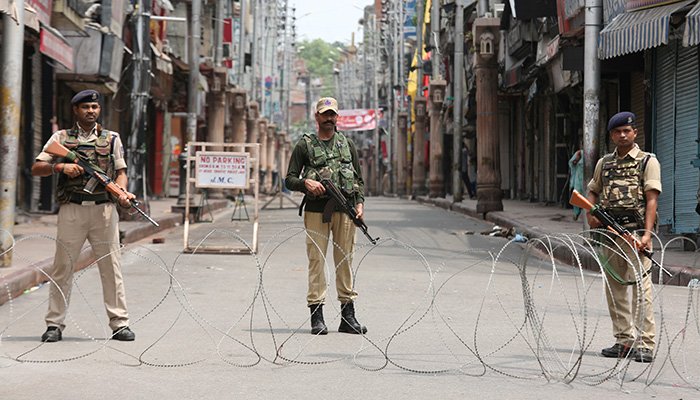What are the implications of India’s latest moves in occupied Kashmir?
The situation on the ground warrants an immediate response from the international community
July 17, 2020

After revoking the special status of Indian-occupied Kashmir, nearly a year back, India has now rolled out a series of measures to permanently change the valley’s core identity and its defining characteristics.
The situation on the ground warrants an immediate response from the international community, as any delay would only further cement the settler-colonialism of India in Kashmir.
After striking down Articles 370 and Article 35(A) in August last year, India identified some key areas for policy intervention to quell the freedom movement in the disputed valley.
First came the introduction of a new residency law to create new ground realities in Jammu and Kashmir. Under the new rule, Indian citizens who have lived in Indian-occupied Kashmir for 15 years can claim a domicile status, as well as students and children of government officials.
According to Indian media reports, after the law was passed over 30,000 outsiders were granted permanent residency status. In July, another 6,000 people – the majority of whom have retired Nepali Gorkha soldiers – were also issued certificates that allow them to buy the property and apply for jobs in the area. The law specifically facilitates men in uniform to settle in Kashmir, permanently but denies Kashmiris the right to return, who were forced to flee to Azad Jammu and Kashmir to escape state persecution.
Another recent attempt by India to clamp down on the voices of freedom was to economically deprive the Kashmiri people. New residents have been assisted in applying for government jobs, including the 50,000 or so positions that recently opened up in the valley.
Furthermore, large swaths of prime land have already been identified to help outsiders settle in. While native Kashmiris are struggling to make ends meet. For over a year now, they have been living under a virtual lockdown and faced with starvation, yet their homeland has been open to Indian tourists and pilgrims.
Also, India continues to witch-hunt second and third-tier Kashmiri leadership. This is bound to create a major political vacuum as the senior leadership is unable to effectively lead youngsters, either due to a growing age gap or due to prolonged incarceration. The politician Shabir Shah, for example, spent 33 years behind bars.
Pakistan will have to do more to respond to the developing situation in Kashmir. Up until now, the country’s response to the diplomatic front has not been effective.
One thing, Pakistan can do is to approach all international forums, including the International Criminal Court (ICC) and the United Nations to raise the matter of India changing Kashmir’s demographics.
Also read: Indian troops martyr three in occupied Kashmir
Changing the demographics of occupied land is a war crime under the Fourth Geneva Convention and the Statute of the ICC.
Closely interlinked to this issue is the repatriation of the Kashmiri refugees, who are currently living in Azad Jammu and Kashmir.
After India’s decision to declare Kashmir a Union Territory, Pakistan should now consider withdrawing from the 1972 Simla Agreement. The agreement, as interpreted by Delhi, bounds Pakistan and India to resolve Kashmir bilaterally, without any third-party intervention. The agreement has, therefore, lost its utility today, except being an albatross around the neck of Pakistan when it comes to raising the Kashmir issue on the international front.
Demographic changes are some of the most lethal weapons historically employed by occupational powers to colonize a nation beyond recognition. The fate of aboriginals in America, Australia, and elsewhere is a living testimony to this assertion.
Kashmir today is faced with a similar threat.
Sayyid is an Islamabad-based researcher. He can be reached at [email protected]











